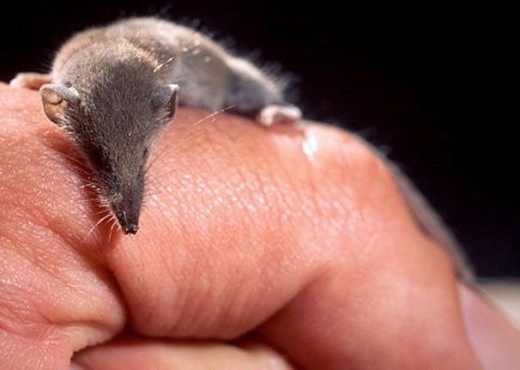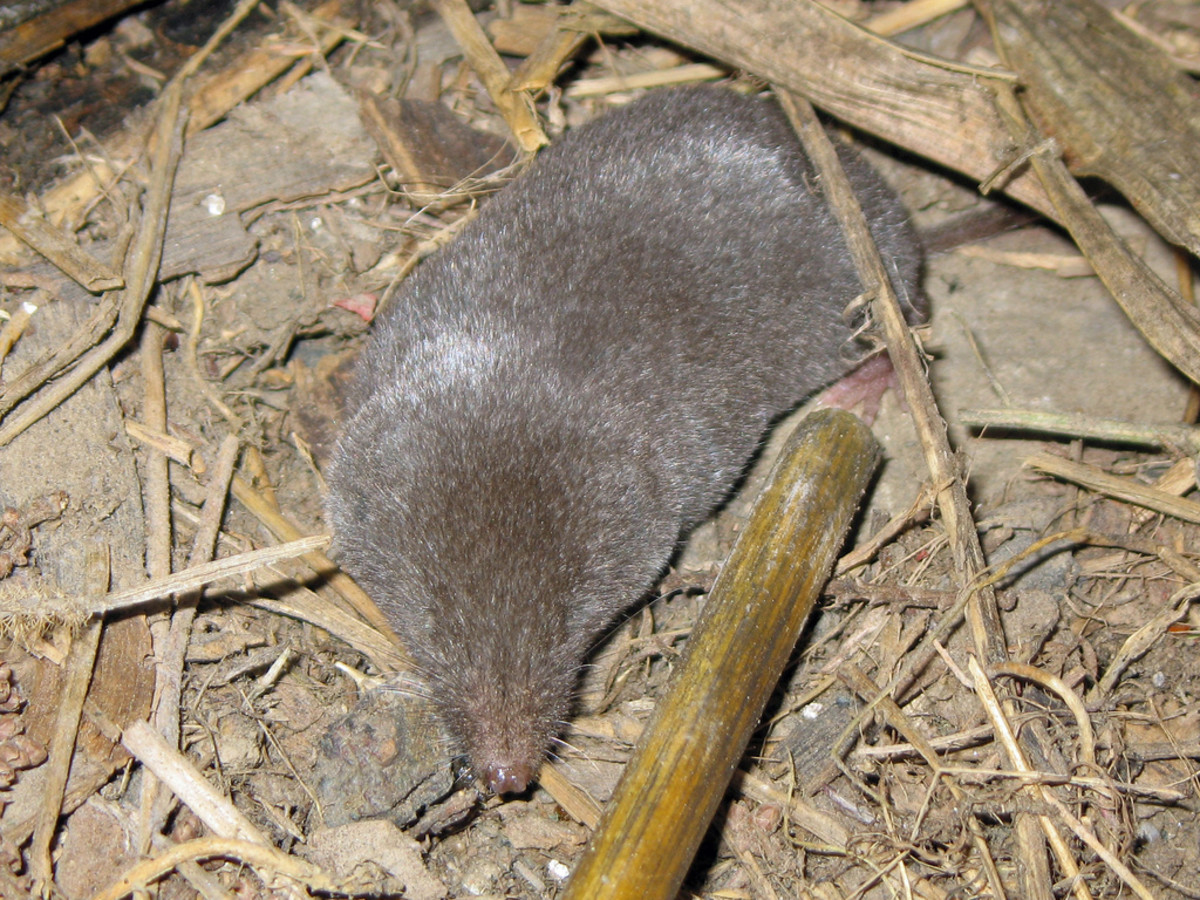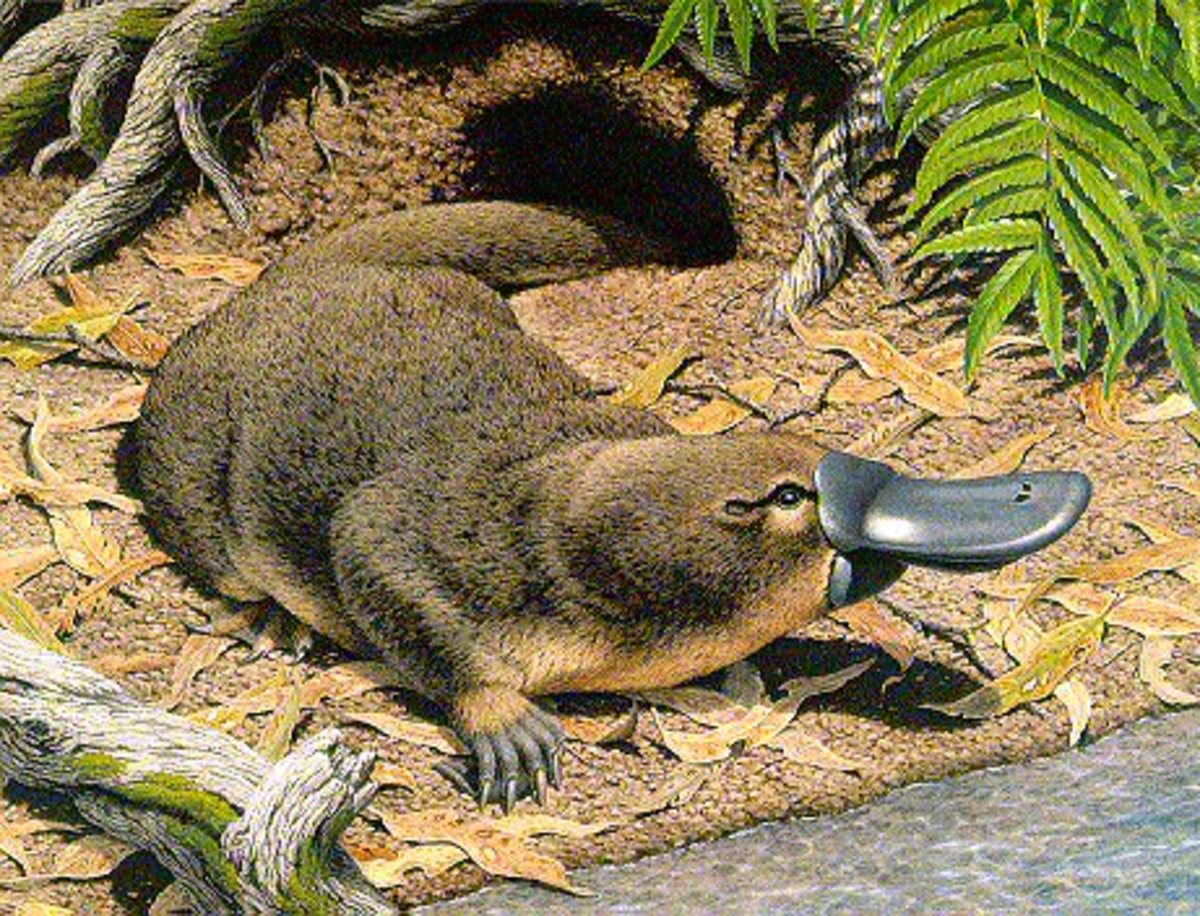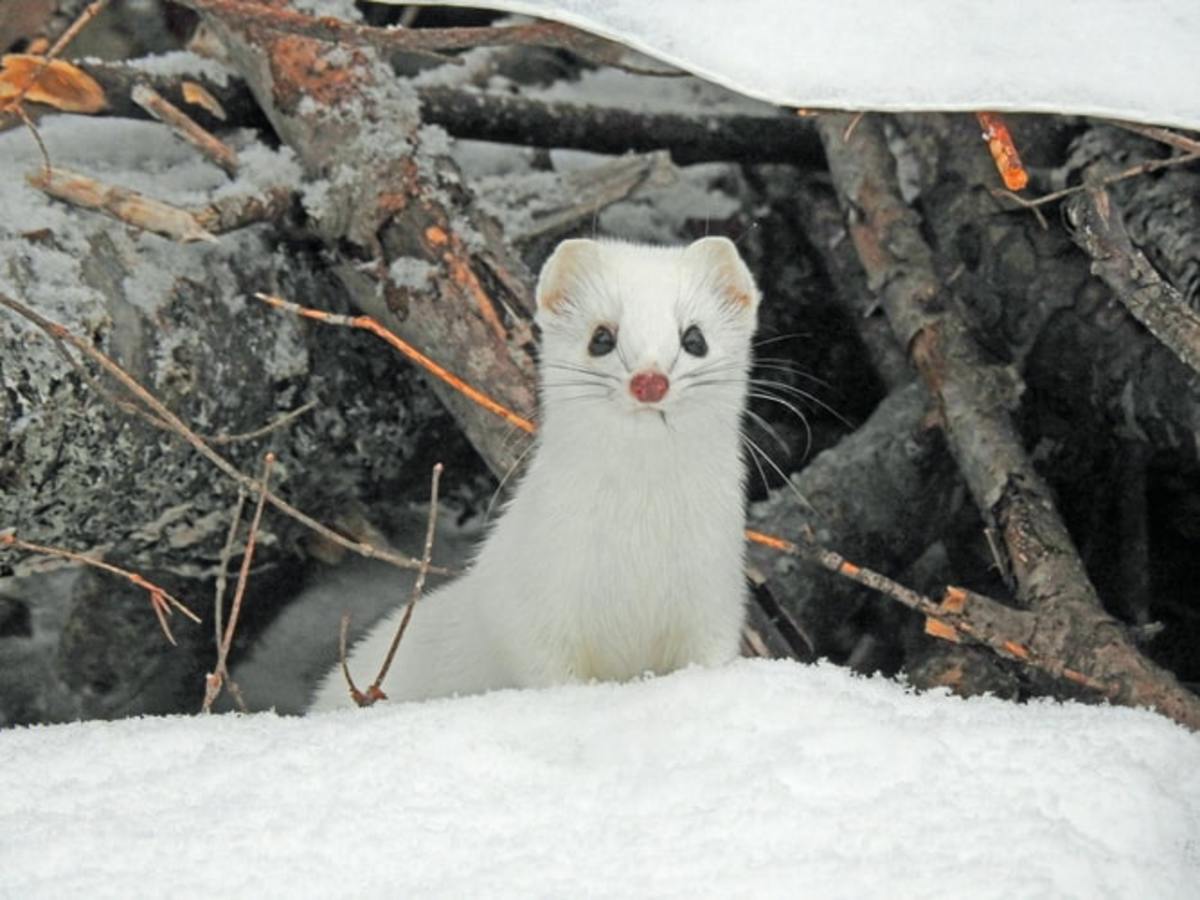The smallest mammal in the world

Meet the Etruscan shrew. Also known as a Pygmy White-toothed Shrew, Savi's Pygmy Shrew, and White-toothed Pygmy Shrew, the scientific name for this miniscule animal is Suncus etruscus. This shrew has a wide distribution, an assumed large population, a tolerance of habitat changes and several protected areas in which it lives. [photo source: http://carnivoraforum.com/topic/9634952/1/ ]
Shrews look like long-nosed mice, but in fact they are not rodents, but more closely related to moles, having sharp, spike-like teeth rather than gnawing front incisors. The Etruscan shrew, as indicated by its name, is found in the Mediterranean climate zone of Europe, the Near East and North Africa. It is also found in the Central and South Asia, and can live in any altitude from sea level to 3,000 meters, preferring abandoned olive groves, vineyards, gardens, cultivated areas overrun by Mediterranean shrubs, and open forest if there are dry stones to use as shelter. It will avoid sand dunes, dense forests and highly cultivated land. In general, if there is a temperate or tropical environment, savanna, grassland, forest or scrub forest, with adequate shelter material, the Etruscan shrew is at home.
Weighing in at between 1.8 and 3 grams, at 35 to 50 mm in length (almost two inches at most), excluding the tail, which is longer than half the body, this shrew is considered one of the smallest mammals living today. It is usually a gray-brown color, light gray on the stomach, with uniquely small hind legs.
Because of its small size and its ability to elude capture, there is a lot still unknown about this little animal. There is no overt difference in the appearance by gender; litters of two to six offspring have a gestation period of about 27 days, and reach maturity in anywhere from 12- 24 months. The parenting habits of this shrew are unknown; since parenting by closely related shrews vary widely, no supposition is made in the case of the Etruscan shrew. It is believed to be solitary and territorial except during breeding season. The lifespan may range from one to five years.
This mammal is hard to keep in captivity due to its size and large energy requirements, which keep it very active foraging for food. It is constantly poking its long nose’s whiskers around to search for small insects, mealworms, young frogs, lizards, larvae and crickets, especially at night, reaching maximum activity at dawn. It eats about 1-1/2 to two times its own body weight per day. It has been known to hunt individual prey as large as itself, but it has difficulty with large chunks of food, and prefers small portions. It will avoid ants, preferring species with a soft, thin exoskeleton. With large prey, the shrew will kill by a bite to the head, then eat the prey immediately. With smaller prey such as insects, it will take them back to the nest.
When not eating, it will groom itself constantly. Rest consists of short periods of hiding among rocks and under leaves, and a lot of activity appears to be searching for these habitats to rest for as little as half an hour. Day time activity is geared to the resting, grooming, and looking for new habitats. Defending its territory consists of making chirping noises and showing aggressive behavior toward intruders. If it is startled and cannot flee, it will make a harsh shrieking call. When on the move, it makes a clicking sound, possibly for echolocation. Its only known predator is the owl. While playing a role in insect control, the Etruscan shrew is no danger to its environment or humans.
Because it has a very fast heart beat and a relatively large heart muscle mass, the white-toothed pygmy shrew has been used in studies to determine the relationship between heart rate and oxygen diffusion, as compared to humans. The oxygen consumption rate of the shrew is 67 times higher than that of man, which is achieved by a heart rate which is only twelve times the human rate.
This smallest of mammals, the Etruscan shrew, is an intriguing and elusive character, keeping secrets about its life style despite its wide range of habitat.
© 2014 Bonnie-Jean Rohner









